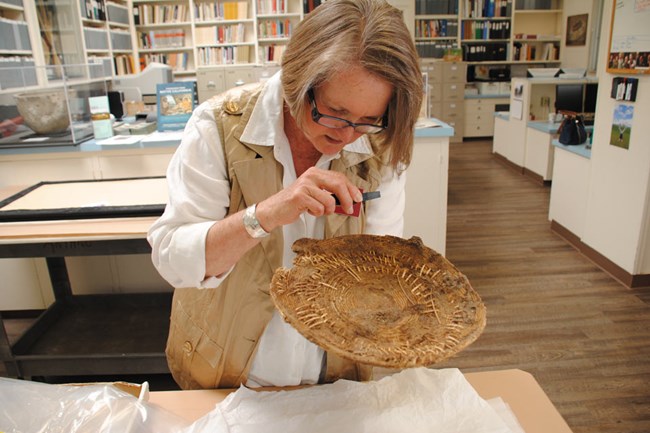
Chapter 5
Dr. Jan Timbrook, Curator of Ethnography, Santa Barbara Museum of Natural History, discusses plants the Indigenous people of San Nicolas Island might have used for food and other purposes.
San Nicolas Island has fewer plant resources compared to the mainland, so food from the sea was important to the islanders. In order to survive, they needed to know where to look and what time of year they could collect seeds, fruits, leaves, and roots to supplement their mostly marine based diet.
For example, in early spring, miner’s lettuce and clover provided succulent fresh greens. Later on, seeds from grasses and wildflowers like fiddleneck and coreopsis could be collected, dried, and stored for future use. Starchy bulbs of blue dicks were dug up and roasted in pit ovens like little potatoes. They used the edible pads and juicy red fruits of the prickly-pear cactus—but the spines needed to be carefully removed first!
Most plants that mainland peoples used for making baskets, cordage (string), and tools were not found on San Nicolas, so the islanders found substitutes. Surf grass, a marine plant that looks like long green hair, was very useful. It was made into mats for sitting or sleeping on. It was also attached to a framework of driftwood or whale rib bones and used as roofing material for houses. Its strands were also twisted into cordage, which was then made into nets, bags, fishing lines, and even women’s skirts.
-
Listen to chapter 5 entry
Learn about how the native people on San Nicolas Island used island plants.
Last updated: April 23, 2025
